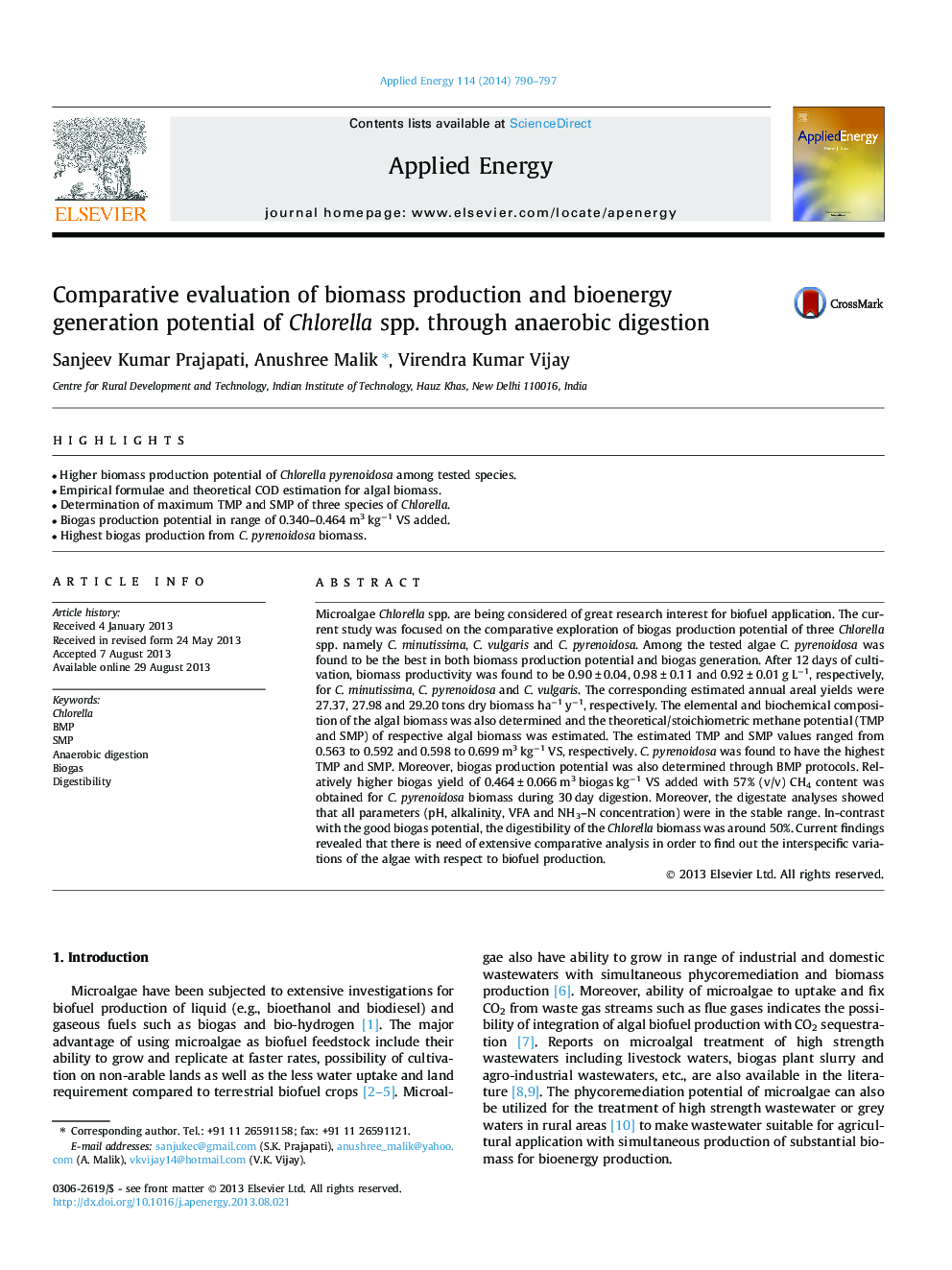| Article ID | Journal | Published Year | Pages | File Type |
|---|---|---|---|---|
| 6691772 | Applied Energy | 2014 | 8 Pages |
Abstract
Microalgae Chlorella spp. are being considered of great research interest for biofuel application. The current study was focused on the comparative exploration of biogas production potential of three Chlorella spp. namely C. minutissima, C. vulgaris and C. pyrenoidosa. Among the tested algae C. pyrenoidosa was found to be the best in both biomass production potential and biogas generation. After 12 days of cultivation, biomass productivity was found to be 0.90 ± 0.04, 0.98 ± 0.11 and 0.92 ± 0.01 g Lâ1, respectively, for C. minutissima, C. pyrenoidosa and C. vulgaris. The corresponding estimated annual areal yields were 27.37, 27.98 and 29.20 tons dry biomass haâ1 yâ1, respectively. The elemental and biochemical composition of the algal biomass was also determined and the theoretical/stoichiometric methane potential (TMP and SMP) of respective algal biomass was estimated. The estimated TMP and SMP values ranged from 0.563 to 0.592 and 0.598 to 0.699 m3 kgâ1 VS, respectively. C. pyrenoidosa was found to have the highest TMP and SMP. Moreover, biogas production potential was also determined through BMP protocols. Relatively higher biogas yield of 0.464 ± 0.066 m3 biogas kgâ1 VS added with 57% (v/v) CH4 content was obtained for C. pyrenoidosa biomass during 30 day digestion. Moreover, the digestate analyses showed that all parameters (pH, alkalinity, VFA and NH3-N concentration) were in the stable range. In-contrast with the good biogas potential, the digestibility of the Chlorella biomass was around 50%. Current findings revealed that there is need of extensive comparative analysis in order to find out the interspecific variations of the algae with respect to biofuel production.
Related Topics
Physical Sciences and Engineering
Energy
Energy Engineering and Power Technology
Authors
Sanjeev Kumar Prajapati, Anushree Malik, Virendra Kumar Vijay,
